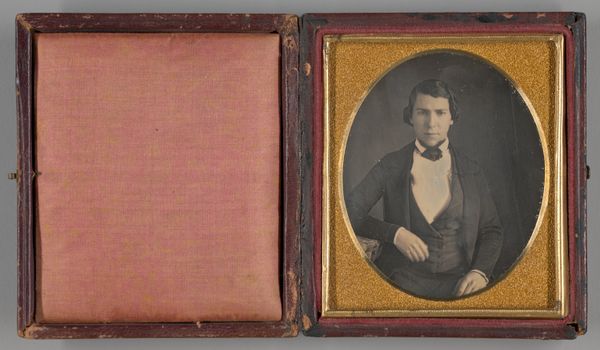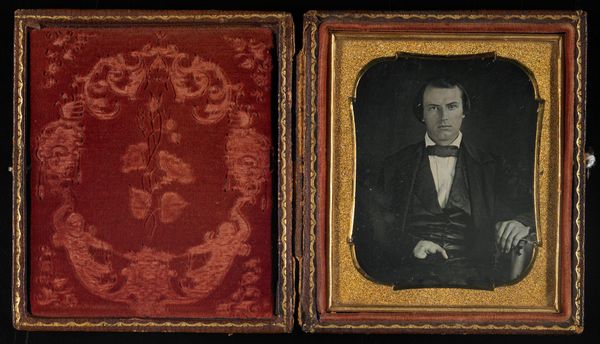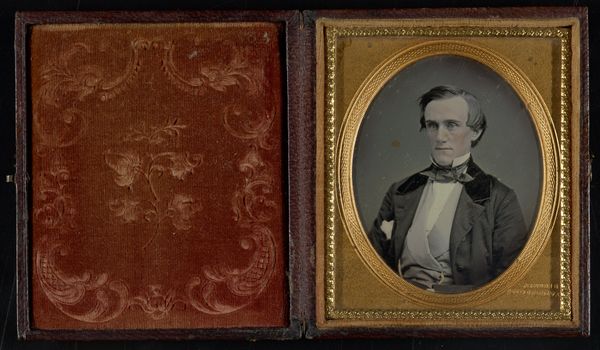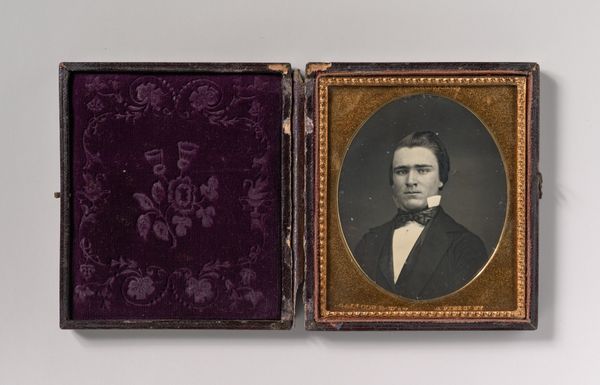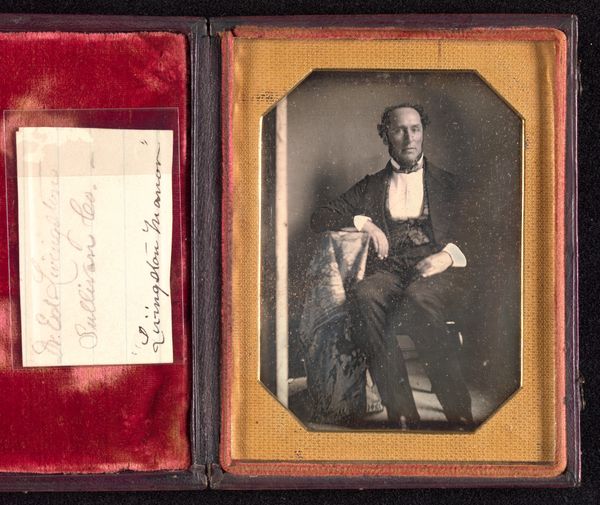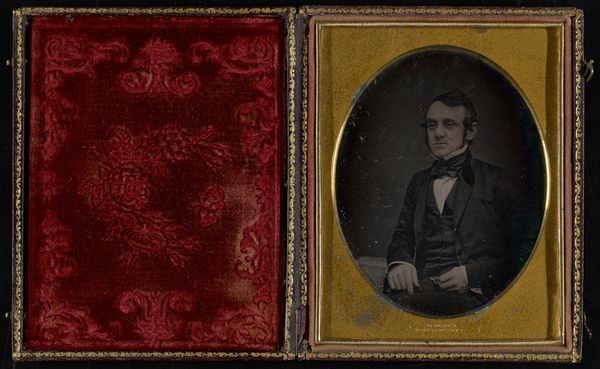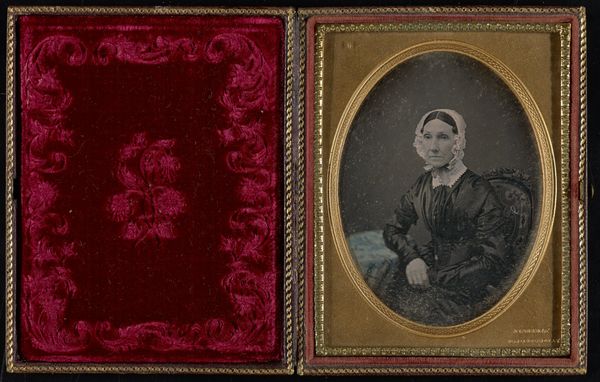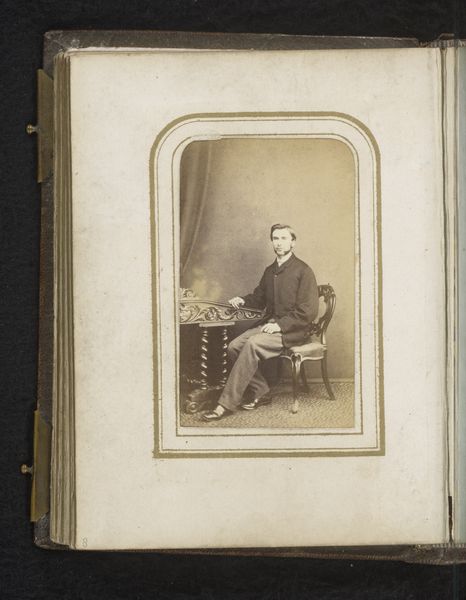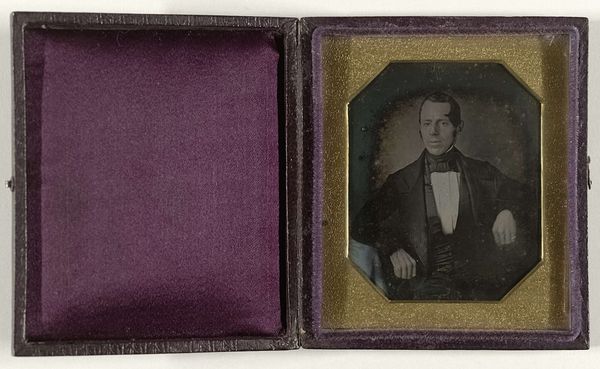![[Portrait of a Young Man] by Samuel Morse](/_next/image?url=https%3A%2F%2Fd2w8kbdekdi1gv.cloudfront.net%2FeyJidWNrZXQiOiAiYXJ0ZXJhLWltYWdlcy1idWNrZXQiLCAia2V5IjogImFydHdvcmtzL2M1NWQyZTVmLTc0YzUtNDM1Yi05ZmY2LTUxOTJiMWM2NDZjMC9jNTVkMmU1Zi03NGM1LTQzNWItOWZmNi01MTkyYjFjNjQ2YzBfZnVsbC5qcGciLCAiZWRpdHMiOiB7InJlc2l6ZSI6IHsid2lkdGgiOiAxOTIwLCAiaGVpZ2h0IjogMTkyMCwgImZpdCI6ICJpbnNpZGUifX19&w=3840&q=75)
daguerreotype, photography
#
portrait
#
daguerreotype
#
photography
#
romanticism
#
history-painting
Dimensions: Image: 5 x 4.2 cm (1 15/16 x 1 5/8 in.), oval
Copyright: Public Domain
Editor: This is *Portrait of a Young Man*, a daguerreotype created by Samuel Morse in 1840, and it’s housed at the Metropolitan Museum of Art. The sepia tones give it a real sense of history. How would you interpret the symbols within this portrait? Curator: This daguerreotype isn't just a likeness; it's a coded message from the past. Think of clothing. His dark suit and bow tie - the uniform of the aspiring middle class. It projects seriousness, ambition. But, how do those elements contrast with the softness in his eyes? Editor: I see it too – almost vulnerability alongside that ambition. Is it common to read portraits as narratives in this way? Curator: Absolutely. In early photography, a portrait was an aspirational object, like a carefully chosen mask for the future. The subject controls the story through posture, dress, and expression, all designed to convey an image. Editor: The way you describe it makes me consider that this portrait can reveal cultural ideals and how someone at this time aspired to be perceived in society. Thank you. Curator: The daguerreotype itself symbolizes modernity. It marks a radical shift in image making that allows us to see that desire for both remembering and progressing through the visual shorthand embedded within this intimate frame.
Comments
No comments
Be the first to comment and join the conversation on the ultimate creative platform.


